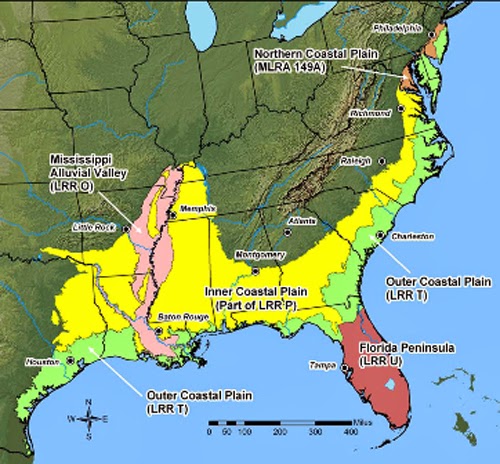This just in: My initial identification of this thing appears to have been incorrect. I have edited the post accordingly. Thanks to Floyd Shockley for the correct identification: Micropsephodes lundgreni.
I may be able to announce one of our first new southeastern beetle discoveries today. I’ve spent the past few weeks sorting the rather large accumulation of unsorted beetles in the Clemson collection. This now includes many of the specimens collected since we moved to South Carolina. As I reached the end of one of these new trays there were some minute (~1.2mm) black beetles, collected by Katie and me back in March, that I did not immediately recognize, even to family. This is pretty rare and always exciting. The first specimen I looked at evidently had been collected dead, as it was missing most legs, antennae, even the labrum had broken off. While I knew it was interesting, I also knew it’d be an uphill battle to identify it based on what was still there. Fortunately two more intact specimens turned up in short order. I’ll show a few pictures first, with the spoilers to come later.
I may be able to announce one of our first new southeastern beetle discoveries today. I’ve spent the past few weeks sorting the rather large accumulation of unsorted beetles in the Clemson collection. This now includes many of the specimens collected since we moved to South Carolina. As I reached the end of one of these new trays there were some minute (~1.2mm) black beetles, collected by Katie and me back in March, that I did not immediately recognize, even to family. This is pretty rare and always exciting. The first specimen I looked at evidently had been collected dead, as it was missing most legs, antennae, even the labrum had broken off. While I knew it was interesting, I also knew it’d be an uphill battle to identify it based on what was still there. Fortunately two more intact specimens turned up in short order. I’ll show a few pictures first, with the spoilers to come later.
I must sheepishly admit that I did not immediately turn to
the family key in the new American Beetles. I was convinced it must be
something I’d recognize if I just went through the characters I could see in my
head for a while. It was pretty clearly cucujoid, and I narrowed the
possibilities down to just a couple families. Then I headed on to BugGuide,
mainly to look at pictures of genera that I didn’t already know. It was among
the endomychids that a the winning candidate finally emerged, a genus I’d never
heard of: Rhymbomicrus (subfamily Anamorphinae – a heterogeneous assemblage in
both name and composition [here is the point where I should have referred to a good key]!) LSAM folks had posted a few pictures of a specimen
Matt Gimmel identified, good enough to suggest a confirm the genus at least. The first
fun realization was that we didn't yet have any of this group in the
collection, so these were at least new to Clemson. [This remains true; Micropsephodes lundgreni is still new to our collection.]
American Beetles revealed a revision done by Jim Pakaluk in
1987, published in the ESA Annals. So I had high hopes of identifying our
specimens to species. These hopes were quickly dashed, since I had the genus wrongbut for what I expect
will be an interesting reason. The genus includes only three North American
species, and the key seems straightforward, running straight to Rhymbomicrus
lobatus, the most widespread of the three (though never previously reported
from South Carolina). However, nowhere in the key or in the description does it
mention a very distinctive character of these – our lone male has a small hairy
horn on the clypeus! This is best seen in the lateral view, if you compare the
left figures (the male) with the right. It’s possible that this interesting sexual dimorphism was previously overlooked, but Jim
and his publications are generally highly regarded, and with a fair bit of
material available to him, it’s hard to believe. So it seems possible that
we’re dealing with a new species in a poorly known and little documented group.
Topping it all off is the fact that this was collected on the Botanic Garden
grounds on the Clemson University campus. In Chris Carlton & Rich Leschen's original description of Micropsephodes lundgreni, the interesting sexual dimorphism is clearly figured and described, and this would have clinched the identification, had I not been misled by the close similarity of Rhymbomicrus. I am at least glad to see that both they and Floyd Shockley in a more recent note on the species have emphasized the sparseness of records for this species. So despite my initial misidentification, this remains an interesting and valuable record. As I’m always telling people, there
are great discoveries to be made literally everywhere, if one takes the time to
look.
Wrapping up my embarrassed updates, I frequently warn folks about the dangers inherent in using photo guides to make identifications. I thought I was exempt from my own warnings. In the midst of a diverse and new fauna, I am most certainly not!
Wrapping up my embarrassed updates, I frequently warn folks about the dangers inherent in using photo guides to make identifications. I thought I was exempt from my own warnings. In the midst of a diverse and new fauna, I am most certainly not!

















































